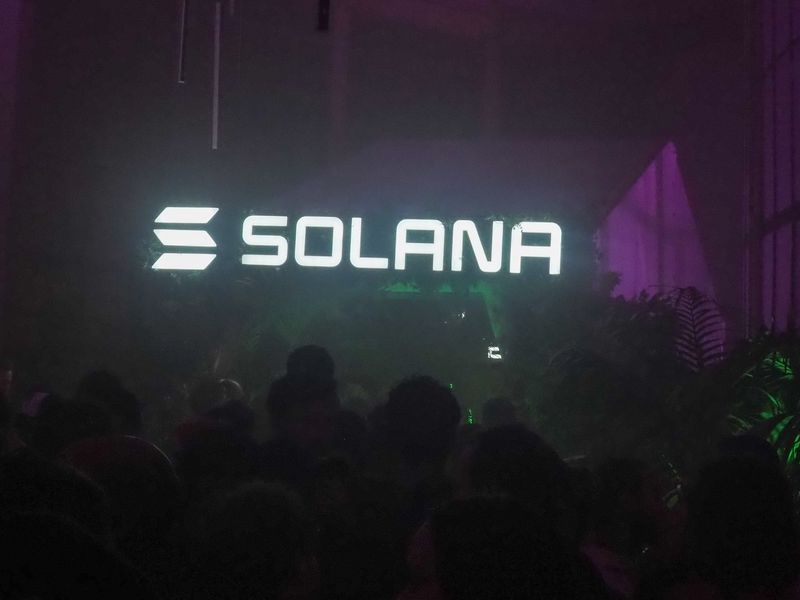Cracks Appear as Ethereum Staking Demand Wanes
Rewind to earlier this year, and staking on the Ethereum blockchain was all the rage. At the heart of it all was Lido Finance, a decentralized protocol that allowed traders to both earn rewards from Ethereum staking but also to get a liquid proxy token “stETH” they could trade in the meantime. Lido quickly surged to the top rank among decentralized finance or DeFi projects. But lately, Lido is experiencing growing pains – along with suspicion and resentment. We pull it all together in Network News.
-
Stellar’s “Soroban” project draws closer to fruition, putting the O.G. blockchain into competition with Ethereum and other smart-contracts blockchains, and possibly some fresh momentum for the XLM token.
-
More job cuts hit the blockchain sector as crypto winter drags on.
-
Scroll’s new layer-2 network goes live, adding to “zkEVM” competition for Polygon, Matter Labs.
You’re reading The Protocol, CoinDesk’s weekly newsletter that explores the tech behind crypto, one block at a time. Subscribe here to get it every week.
Network news
PEAK LIDO? As Ethereum transitioned over the past year to a fully functional proof-of-stake blockchain, market observers chronicled the staggering rise of Lido Finance, which effectively allows investors to stake their ether (ETH) – and thus earn rewards, yield – while also getting a token, stETH, that they can trade in the meantime. For many, that combination proved more attractive than the technically cumbersome job of setting up a validator and locking up ETH into the main blockchain. The problem now is that Lido has become too popular – bumping up against the 33% threshold of total ETH staked where the project could theoretically threaten the 67% supermajority needed to finalize transactions. Now, there are signs of pushback from the crypto community – as well as growing pains for Lido in managing such a sprawling operation. Late last week, voting closed among members of the Arbitrum network community on how to allocate an incentive program of 50 million ARB tokens (worth about $40 million), and Lido was denied in its application for 4 million ARB – seen as an expression of protest. “The Ethereum immune system is waking up,” Evan Van Ness, publisher of Week in Ethereum News, posted on X. Defenders of Lido are quick to point out that the protocol has merely made the most of blockchain incentives and innovation, and that the real threat still comes from more centralized players, such as big crypto exchanges. “The fact of the matter is Lido has, and is heavily incentivized (as revealed in their growth) to act responsibly, and its presence elevates Ethereum decentralization, not contaminates,” according to a Messari report. But there are also operational issues. Lido had to explain in a post-mortem analysis last week why 20 of its Ethereum validators recently got “slashed,” or penalized: “The root cause of the slashing boiled down to executing non-optimal fallback procedures during datacenter connectivity issues.” Got that? There was also the news that Lido has decided to sunset a separate staking service on the Solana blockchain; it was just too costly, with a $700,000 investment over the 2022-2023 budget and only $220,000 of revenue. “It was deemed a necessity for the success of the broader Lido protocol ecosystem,” the project’s developers wrote in a post. Resorting to the tourniquet might be a rare sign of weakness from the single most successful project in all of DeFi.
MAWR JOB CUTS. For the third straight week, reports of job cuts have filled the blockchain news headlines, offering further evidence of the economic toll of crypto winter. CoinDesk broke the news last week that CertiK, the blockchain code auditor, had made a “strategic workforce adjustment” impacting 30-40 people, or about 15% of the company’s workforce. The recent cuts were made “in response to evolving market dynamics,” according to the team. It was a harsh comedown, since the company CertiK raised nearly $150 million of fresh capital just last year. The Block reported last week that Parity Technologies, a primary developer of the Polkadot blockchain, would be “sunsetting some of its existing go-to-market functions,” and “impacting staffing” as a result. Transactions are down across the blockchain industry, and the crypto firm Galaxy noted in a research report that the “VC fundraising environment remains extremely challenging,” and that “a lack of significant new venture dollars will continue to pressure founders.”
Tether freezes 32 blockchain addresses linked to terrorism and warfare in Israel and Ukraine, as U.S. Treasury Department targets Gaza crypto business in sanctions to squeeze Hamas.
Uniswap Labs, the key company building atop decentralized crypto exchange Uniswap, will impose a 0.15% fee starting Tuesday on trades involving ETH, USDC and other tokens. It’s being levied by Uniswap Labs in an effort to “sustainably fund our operations,” according to a blog post.
THORSwap, used by FTX Exploiter, resumes trading after updating terms to exclude U.S.-sanctioned countries.
Ferrari, the Italian luxury sports car maker, will start accepting crypto payments in U.S., with Europe to follow.
Protocol Village
Highlighting blockchain tech upgrades and developments.
1. Scroll, represented by co-founder Sandy Peng, confirmed Tuesday that its main network has gone live, joining “zkEVM” competitors including Matter Labs and Polygon, and offering a fresh alternative to the leading Ethereum layer-2 networks Arbitrum and OP Labs’ OP Mainnet.
2. Helix, the decentralized orderbook exchange built on the Injective blockchain, on Wednesday announced plans for Pre-Launch Futures, according to a message from the Injective team: “Helix will be the first exchange to grant the general public access to the Celestia (TIA) token through its perpetual market through this new Pre-Launch Futures product.
3. Decentralized finance (DeFi) protocol ether.fi, which raised $5.3M in March in a seed round led by North Island VC, has rolled out a liquid staking token (LST) called “eETH” that allows users to generate rewards by staking ether (ETH). The plan “will allow users to stake their ETH to accrue staking rewards and automatically restake their ETH in EigenLayer,” according to a press release.
4. Binance Labs, the venture capital and incubation arm of the crypto exchange Binance, has invested in Initia, a “network designed for highly interwoven modular rollups,” according to a blog post: “Initia is a layer 1 on Cosmos with application-specific L2s (Layer 2) using optimistic rollups.”
5. Blockstream opened its eagerly-awaited “Lightning-as-a-Service” solution, Greenlight, to the public at BTC Amsterdam on Thursday, according to the team.
Money Center
-
Methodic Capital Management on Wednesday announced the launch of the Methodic CoinDesk ETH Staking Fund, designed to offer professional investors the total return of ether (ETH) by combining exposure to both the token itself and staking rewards.
Ethereum Validator Backlog Clears Out, as Staking Demand Weakens
Just weeks ago, The Protocol reported how Ethereum developers were worried that the number of validators on the blockchain was growing so fast that the resulting sprawl might cause latency issues. That problem may have temporarily resolved itself, thanks to what Coinbase analysts attributed to “a plateau in investor demand for Ethereum staking.” As reported by CoinDesk’s Krisztian Sandor, the once month-long queue of validators waiting to get onto the network has now basically been cleared out. One factor is that staking rewards have dropped significantly, to near 3.5% from 5%-6% earlier this year, due to tepid network activity to generate revenue from fees and the increasing number of stakers. That looks like a pretty paltry return for crypto, especially with traditional money market funds and old-fashioned, one-year U.S. Treasury bills yielding north of 5%.
:format(jpg)/cloudfront-us-east-1.images.arcpublishing.com/coindesk/Z6SN5KY73VAQ5DFCQH5NYEPOXM.png)
The number of validators waiting to get onto the Ethereum blockchain has nearly cleared out. (Validatorqueue.com)
Calendar
-
Oct. 19-21: xDay conference on blockchain, metaverse and AI, Bucharest.
-
May 29-31, 2024: Consensus, Austin Texas
Edited by Bradley Keoun.








